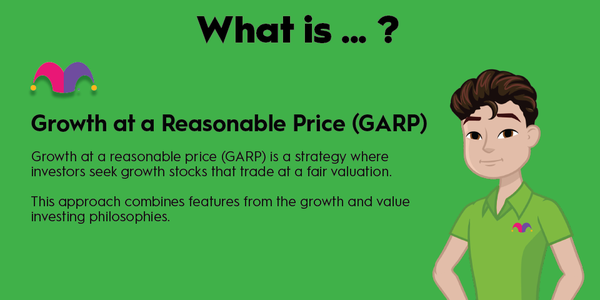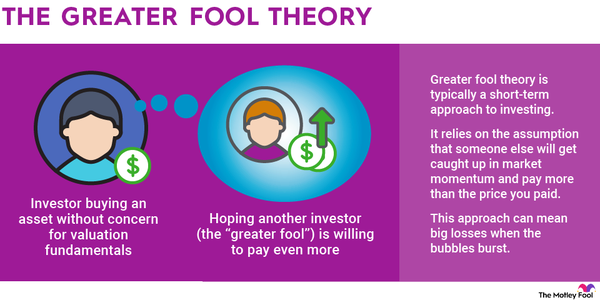Growth stocks represent companies that increase sales and earnings faster than the market. The strong business performance inflates the stock price, creating big capital gains for shareholders.
If beating the market is among your investing goals, growth stocks are on your radar. Read on for a look at growth stocks, how to evaluate them, and how to know whether growth stock investing is right for you.
Understanding growth stocks
Understanding growth stocks
Growth stocks pursue aggressive expansion of their sales and earnings. They can do this by creating new markets, launching new products, growing market share, expanding into new territories, and acquiring complementary businesses.

These initiatives require funding, which can come from ongoing operations, equity financing, or debt financing. Profitable growth companies typically tap their excess cash flow first, which explains why most growth stocks don't pay dividends. Companies with a pipeline of compelling initiatives can often generate better shareholder returns by investing in expansion versus paying dividends.
Growth investors accept this strategy on the assumption they'll be rewarded later with outsize capital gains. If the expected growth doesn't materialize, investors will lose confidence, and the stock price will fall.
Growth stocks are often contrasted with value stocks, which usually pay dividends and exhibit slow and steady growth over time.
Characteristics
Characteristics of growth stocks
Growth stocks can be big or small companies. They can operate in any industry, although many are involved in some form of technology. The characteristics these stocks share are more nuanced than size, age, or market segment. They include competitive advantages, an innovation focus, experienced leaders, and a large addressable market.
Competitive advantage
Growth companies can move quickly and efficiently to outperform the competition. Often, that means they're benefitting from one or more advantages they hold over their peers. Those advantages can involve intellectual property, size and scale, or loyal customers.
Note that customer loyalty can arise in different ways. It can come from an attachment to the brand, from costs associated with switching to a competing product, or from what's called the network effect.
The network effect is the increase in the value of a product or service that happens as more people use it. This is easiest to understand in reference to social media platforms, which become more interesting as users invite their friends and add content.
Innovation focus
Growth companies often use innovation to create new solutions that align with longer-term trends. Tesla (TSLA -1.11%), for example, capitalized on rising demand for electric cars by building models that were faster and more fun to drive than existing options.
Experienced leaders
Evaluating, selecting, and implementing business growth plans is not the stuff of college assignments. Successful growth companies need experienced and disciplined leaders to turn ideas into bottom-line results.
Large addressable market
Growth companies tackle big, global opportunities. Tesla sells cars around the world. Apple (AAPL -0.35%) does the same with smartphones, laptops, and tablets. Amazon (AMZN 3.43%) retails and wholesales hundreds of millions of products across a portfolio of country-based marketplaces.
Note that growth stocks can look overvalued based on price-to-earnings (P/E) ratios and other valuation metrics. This is because investors assume growth stocks will deliver higher earnings in the future. As a result, they're willing to pay more relative to current earnings.
Even so, you can pay too much for a growth stock. Your risk tolerance and timeline can guide you here. If you can handle risk and have a long investment timeline, you may be more accepting of aggressive valuations.
Growth stock investor qualities
Qualities of growth stock investors
Growth stocks are wealth generators, but they're also expensive and volatile. That type of investment demands a methodical, rational, risk-tolerant, and patient investing approach.
Methodical
It's crucial to have a process for evaluating growth stocks and making trade decisions. Our guide to value investing and our guide to growth investing are great places to begin.
Rational
Growth stock investing can fuel emotional decision-making by investors who want to own "the next big thing." Those emotions can encourage buying at the top of a rally or, worse, selling at the bottom of a trough. The best growth stock investors can pause their emotions and make rational decisions, even as circumstances are changing quickly.
Risk-tolerant
Growth stocks can outpace the market. As an example, the S&P 500 Growth Index fell 29% in 2022 and then grew 30% in 2023. By comparison, the standard S&P 500 Index fell 18% in 2022 and grew 26% in 2023. The risk-tolerant investor can take those swings in stride.
Patient
Patience helps growth stock investors wait out the downturns so they can benefit from the next upswing.
A case study
Growth stock case study: Nvidia
Chipmaker Nvidia (NVDA 6.18%) is a proven growth stock. Here's a look at the company in terms of the growth stock characteristics described above.
Competitive advantage. Nvidia has size and reputation on its side, along with a proven system for designing, testing, and iterating its hardware and software products.
Innovation focus. The company has a history of identifying trends early and developing solutions accordingly. The company created the market for 3D graphics in video games in the 1990s. Now, Nvidia holds a dominant position in chips used for artificial intelligence (AI) and related products, which it started working on in the mid-2010s.
Experienced leaders. Nvidia co-founder Jensen Huang has been president and CEO since the beginning. Co-founder Chris Malachowsky is also a member of the executive team.
Related investing topics
Large addressable market. While Nvidia made its name in gaming chips, its products are used in several industries today. The healthcare, data center, and AI industries are all opportunities for the chipmaker. The company has estimated its total addressable market at $1 trillion.
Nvidia has delivered annualized returns topping 45% for its shareholders over the last 15 years. Analysts expect continued growth from Nvidia stock as the chipmaker leverages its leading position in AI. The company's P/E ratio of 92.48 reflects that optimism.



























